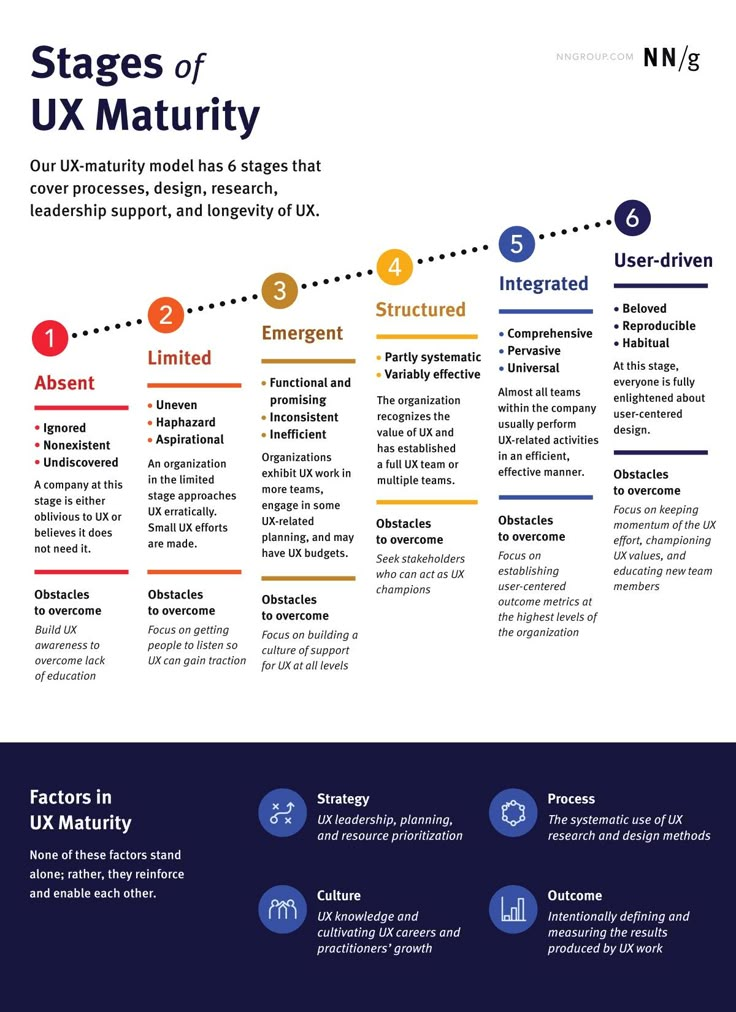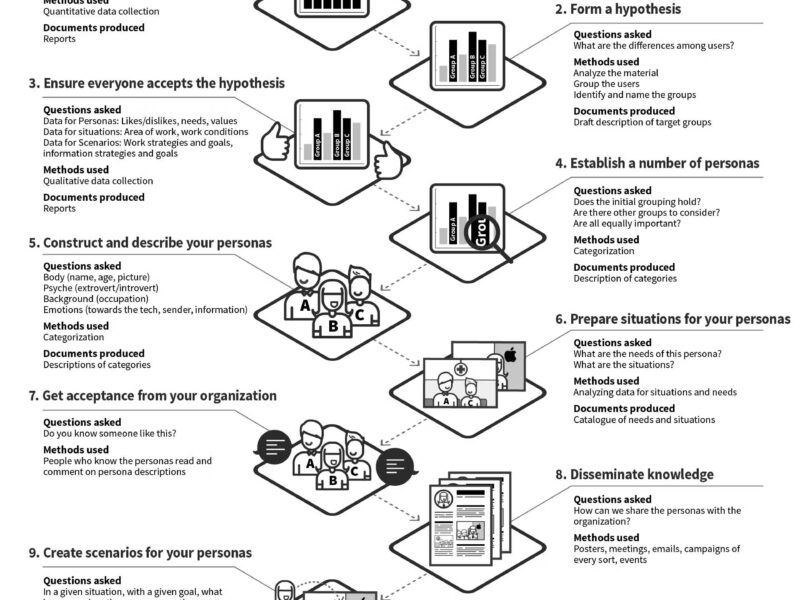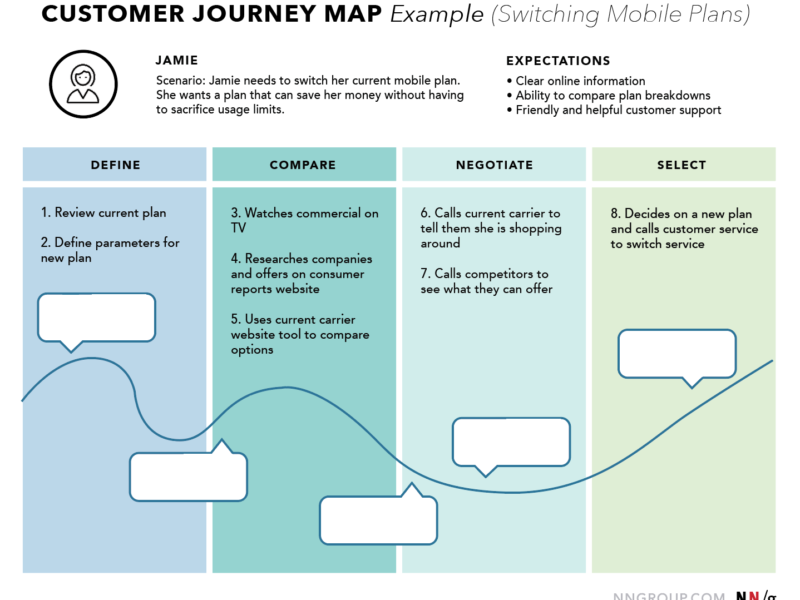A Strategic Blueprint for Organizational Transformation
For over two decades, I’ve navigated the complex landscape of digital product design, from fledgling startups to global enterprises. A constant, universal truth has emerged: the single greatest predictor of a product’s success is not the brilliance of a lone designer or the sophistication of the technology stack. It is the UX maturity of the organization that builds it.
UX maturity is the measure of an organization’s commitment to and effectiveness in integrating user-centered principles across all aspects of its structure and operations. It’s not about having a design team; it’s about how deeply the ethos of user empathy is woven into the fabric of the company’s strategy, culture, processes, and how it measures outcomes.
Many executives believe they are “doing UX” because they have hired a designer or run occasional usability tests. This is akin to claiming you’re a master chef because you own a good knife. True mastery lies in the knowledge of ingredients, the understanding of techniques, the timing, and the relentless pursuit of the perfect dish. Similarly, true UX maturity is a holistic, organization-wide capability.
This article will delve into the Nielsen Norman Group’s (NN/g) UX-Maturity Model, a robust framework I’ve used repeatedly to diagnose organizational health and prescribe a path forward. We’ll explore each of the six stages, the obstacles you’ll face, the tools you’ll need, and how to chart your course to a more user-driven future.
The UX-Maturity Model: A Framework for Assessment and Growth
The NN/g UX-Maturity Model provides a critical lens through which to assess an organization’s UX-related strengths and weaknesses. It defines six distinct stages that describe how systematically and effectively an organization applies user-centered design.
This model is invaluable because it offers more than a label; it provides a roadmap. Understanding your current stage reveals your immediate challenges and the next logical steps for progression. It aligns disparate teams—design, development, product, and executive leadership—around a common vision for what “better” looks like.
The model evaluates an organization across four interdependent factors, none of which can stand alone:
Strategy: UX leadership, long-term planning, and the prioritization of resources (budget, headcount) for UX initiatives. This is the “why” and “what.”
Culture: The organization’s collective UX knowledge, beliefs, and values. It encompasses the cultivation of UX careers and the growth of practitioners. This is the “who” and “how we think.”
Process: The systematic use of UX research and design methods throughout the product development lifecycle. This is the “how we do it.”
Outcome: The intentional definition and measurement of the results produced by UX work, tying it directly to business key performance indicators (KPIs). This is the “so what.”
Progress requires evolution across all these dimensions. A world-class design process (Process) will fail without executive buy-in (Strategy), and a belief in UX’s value (Culture) is meaningless without the methods to enact it (Process).
The 6 Stages of UX Maturity
Stage 1: Absent
UX is ignored or nonexistent.
An organization at this stage is either oblivious to UX or believes it does not need it. The concept of a “user-centered mindset” is entirely foreign. Decisions are driven by technology constraints, executive whims, or competitor actions—never by validated user needs.
Variations: This can range from complete ignorance to active hostility. Sometimes, well-intentioned developers attempt to incorporate UX principles but lack any formal support, methods, or resources. In our original model, this was a separate stage; we now group it here because individual heroics cannot compensate for a complete lack of organizational support.
Obstacles to Overcome: The primary obstacle is a profound lack of education. Stakeholders don’t know what UX is, what benefits it offers, or how to start.
How to Progress: The goal is awareness. This requires internal champions to run small, educational workshops showcasing the ROI of UX. Share foundational articles from Nielsen Norman Group or articles from the Interaction Design Foundation that articulate the business value of design. The input here is sheer curiosity; the output must be a compelling, evidence-based case for change.
Stage 2: Limited
UX work is rare, done haphazardly, and lacking importance.
UX efforts here are erratic and isolated. They might be spurred by a legal necessity (e.g., accessibility compliance), a passionate individual, or an experimental team. There is no dedicated budget, no defined processes, and no recognized UX roles. UX is a side activity, not a discipline.
Variations: UX exists in silos—perhaps within one product team or a marketing department—while the rest of the organization remains at Stage 1.
Obstacles to Overcome: The challenge is moving from ad-hoc efforts to a slightly more structured approach. The obstacle is a lack of process and consistent advocacy.
How to Progress: Focus on generating traction by showcasing small wins. Conduct a quick, low-cost usability study on a critical workflow, document the findings, and present the potential cost savings or conversion improvements to decision-makers. Tools like Hotjar or Microsoft Clarity can provide quick, visual feedback through session recordings and heatmaps. The input is a specific problem area; the expected output is a tangible, positive result that can be turned into a case study.
Stage 3: Emergent
The UX work is functional and promising but done inconsistently and inefficiently.
This is a common stage for many large organizations, particularly in traditional industries like finance and healthcare. UX work is happening in more teams, there may be a small budget and a few dedicated UX roles, but efforts are unstable and based on individual manager initiatives rather than organizational policy. The value of UX is still being “proven,” and it’s often the first thing cut when trade-offs are necessary.
Variations: Work might be consistent but has no impact, or it’s impactful but wildly inconsistent across teams.
Obstacles to Overcome: The danger is complacency—thinking “We do UX now” and stalling. The organization must build a broader culture of support.
How to Progress: The goal is to systematize. Begin formalizing processes. Establish a recurring, lightweight research cadence. Create a shared design system (using tools like Figma, Sketch, or Adobe XD) to create consistency and efficiency. Advocate for the inclusion of UX metrics in project success criteria. The Framework to adopt here is Design Thinking, which provides a human-centered structure for problem-solving that can be taught across functions.
Stage 4: Structured
The organization has a semi-systematic UX-related methodology that is widespread, but with varying degrees of effectiveness.
This is a significant milestone. The organization recognizes UX’s value and has established a full UX team or multiple teams. Leadership supports UX and often incorporates it into high-level strategies. There is a centralized definition of design and a shared, iterative human-centered design process. User research is conducted throughout the product lifecycle.
Variations: UX professionals are confident, and other functions (product, development) are involved in UX work. However, politics and miscommunication can lead to resource misallocation.
Obstacles to Overcome: The weaknesses at this stage are often strategic. Success metrics and bonuses may still be disconnected from UX outcomes. Development processes might skip discovery research. The organization may cater to a few loud customers rather than a proactive UX strategy.
How to Progress: Focus on outcomes, not just outputs. Shift the conversation from “How many features did we ship?” to “How did we improve the user’s experience?” Work with leadership to define and track user-centered OKRs (Objectives and Key Results). Implement more robust research repositories (using tools like Dovetail or EnjoyHQ) to democratize insights and ensure they inform strategy. The input is executive support; the expected output is a direct link between UX efforts and business KPIs.
Stage 5: Integrated
UX work is comprehensive, effective, and pervasive.
At this stage, UX is no longer a separate function; it’s an integrated capability. Almost all teams perform UX activities efficiently and effectively. The organization often innovates in UX methods and may even contribute to the broader field. Crucially, the top-level success metrics that leaders care about are focused on or driven by UX outcomes.
Variations: The risk is becoming overly process-oriented, focusing on the mechanics of UX rather than the outcomes. Leaders might focus on metrics that are business-centered (e.g., “feature adoption”) rather than user-centered (e.g., “task success”).
Obstacles to Overcome: Ensure that “user-centeredness” is the true driver, not just a supporting actor. The primary obstacle is ensuring that high-level metrics reflect genuine user value.
How to Progress: Focus on establishing user-centered outcome metrics at the highest levels. Weave user-centricity into the core business strategy. Frameworks like Jobs to Be Done can help align the entire organization around solving fundamental user needs rather than building features. The input is a desire for true market leadership; the output is a product ecosystem that feels cohesive and valuable because it is built around user needs.
Stage 6: User-Driven
Dedication to UX at all levels leads to deep insights and exceptional user-centered–design outcomes.
This is the zenith of UX maturity. UX is habitual, reproducible, and beloved. Understanding user needs through research is the primary driver of strategy and prioritization. Everyone in the organization, from the CEO to the newest intern, is enlightened about and advocates for user-centered design. These organizations don’t just follow best practices; they set them and plan for long-term innovation.
Variations: There are none. The business’s vision is intrinsically user-centered. However, this stage is fragile and difficult to maintain.
Obstacles to Overcome: The main challenge is sustaining this level amidst growth, acquisitions, and leadership changes. Complacency is the enemy.
How to Progress: The work is about vigilance. Focus on keeping momentum, championing core UX values, and relentlessly educating new team members. Institutionalize knowledge through robust onboarding and continuous learning programs. The goal is to make user-centricity so embedded that it survives any individual leader or structural change. Companies like Apple and Airbnb are often cited as examples, though even they must constantly fight to maintain this focus.
Judging Your Organization’s UX Maturity
An accurate assessment requires a multi-faceted approach:
Interviews & Observation: Talk to and observe people across functions and levels.
Artifact Analysis: Review processes, deliverables, and roadmaps.
Tool Audit: Understand what tools are available and how they’re used.
Organization-Wide Survey: Gauge perceptions and understanding of UX.
As a first step, NN/g offers a free, self-reported UX-maturity quiz that provides a rough estimate based on your perspective. It’s a useful conversation starter, but it should not be mistaken for a comprehensive audit.
Team Maturity vs. Organization Maturity
A critical distinction must be made. A single team (e.g., a “skunkworks” innovation lab) can operate at a Stage 4 or 5 level while the rest of the organization languishes at Stage 2. However, a team cannot truly be “User-Driven” (Stage 6) if the wider organization is not. True high maturity requires consistency, shared resources, and leadership support across the entire organization. The siloed team’s impact will always be limited by the organization’s overall maturity ceiling. Therefore, evaluate the whole organization to get a true picture.
History and Evolution of the NN/g UX-Maturity Model
Jakob Nielsen’s original 8-stage model from 2006 was a pioneering effort to categorize how companies approach usability. The field has transformed dramatically since then. UX has expanded from pure “usability” (can they use it?) to encompass the entire “user experience” (do they love it?).
The modern 6-stage model reflects this evolution, incorporating what we’ve learned about the necessity of design ops, research repositories, the strategic role of UX leadership, and the need to tie UX work directly to business outcomes. It is a living model, continually refined based on NN/g’s ongoing work with countless clients.
Conclusion: The Journey, Not The Destination
Understanding your organization’s UX maturity is not an exercise in vanity. It is a vital diagnostic tool that allows you to identify strengths to celebrate and weaknesses to address. It provides a realistic, shared language for improvement.
The path forward is incremental. You cannot leapfrog stages. The practices and cultural shifts of each stage create the necessary foundation for the next. Progressing even one stage can take years of dedicated effort. Don’t be discouraged. Start with an honest assessment, build a coalition of champions, celebrate small victories, and always, always tie your work back to both user value and business impact.
The goal is not to reach Stage 6 overnight. The goal is to take the next step. Whether you’re building awareness from Absent or fighting to maintain momentum at User-Driven, increasing your UX maturity is the most powerful investment you can make in your products, your teams, and your users.
Further Reading and References:
Nielsen Norman Group: UX Maturity Model
Nielsen Norman Group: UX Maturity Quiz
Nielsen Norman Group: The Original 8-Stage Maturity Model
Forrester Research: The Business Impact Of Customer Experience
McKinsey & Company: The business value of design
Interaction Design Foundation: Design Thinking
Jobs to Be Done: Theory and Framework


